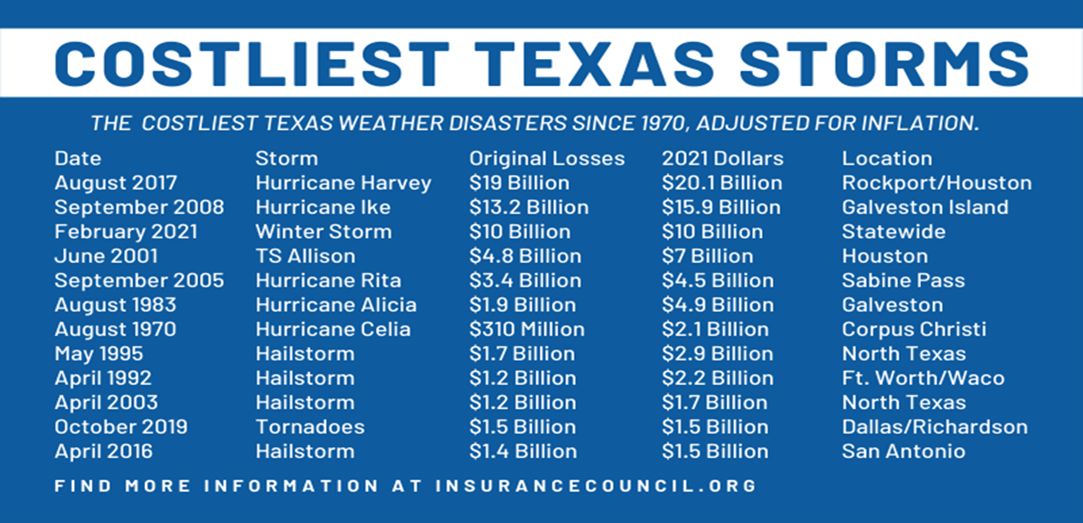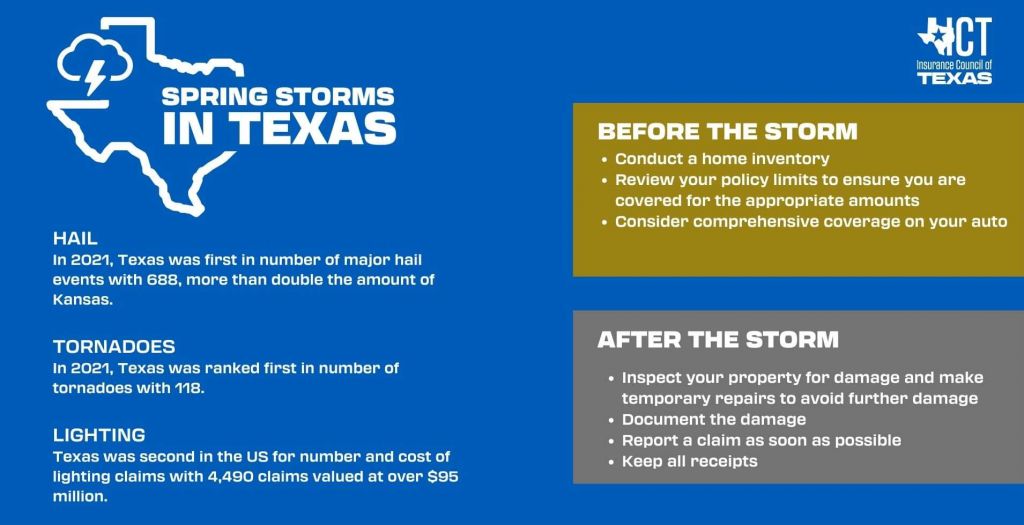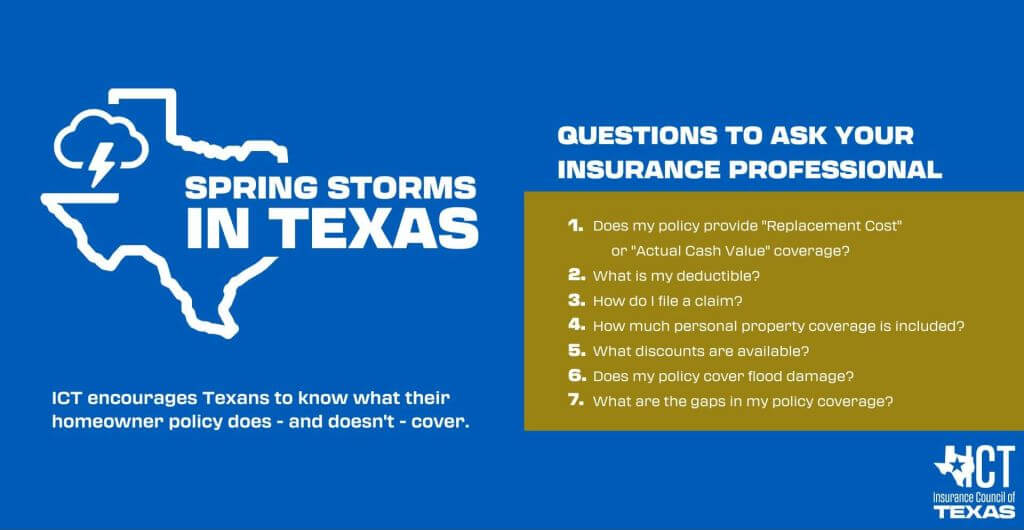Spring Storms in Texas
Contact ICT:
Rich Johnson, Director of Communications and Public Affairs
Texas is notorious for having powerful storms sweep through the state in the late winter and early spring. Being prepared can help avoid unexpected expenses, protect property, and, most importantly, keep Texans safe during the storm season. The spring storm season usually lasts from March through May and poses a significant risk of hail, wind, tornadoes and sometimes flooding. The state typically experiences a surge in thunderstorms during this time, some of which can be severe and cause substantial property damage. Storms can form suddenly and be difficult to predict, so Texans are urged to stay alert and keep an eye on weather forecasts during this period.
See the 10 costliest storms in Texas below!
The best way to protect oneself during severe weather is to have a plan in place, including a designated safe area in the home or workplace, and to heed warnings and take shelter immediately if necessary. Homeowners are encouraged to prepare their properties for potential storm damage by securing outdoor items, trimming trees and branches, and checking for leaks or weak spots in roofs and windows and creating a home inventory.
View or Download our Before/After the Storm Safety tips below.
How to Prepare for Severe Storms
- Ensure you have adequate coverage
- All Texans should start by reviewing their insurance policies to make sure they have the right coverage and protection in place, including dwelling amounts.
- Remember, damage to a vehicle due to hail, wind or falling trees is only covered by comprehensive coverage on your auto policy.
- Prepare your Vehicles
- Move your car into a safe, covered location such as a garage or carport.
- Fill your gas tank
- Create a home inventory
- To be better prepared for the claims process that happens after a loss. Walk through your home, recording each room and documenting the items you own, then email the file to yourself or store it in the cloud to access later. Make a list of electronics, jewelry, artwork or other valuables in your home.
- Sign up for weather alerts
- Check your local news station or the National Weather Service for alert systems and plan an evacuation route if needed.
- Create an Emergency Kit
- Be prepared for any severe weather event by creating an emergency disaster supply kit. A basic kit includes:
- Enough water for several days for each person in your household (a gallon a day is recommended),
- Non-perishable food,
- Battery-powered radio, flashlight, first aid kit, and extra batteries and cell phone chargers,
- Copies of important documents like your insurance policy,
- Other items you may need include medicines, pet food, and cash
- Be prepared for any severe weather event by creating an emergency disaster supply kit. A basic kit includes:
See a full list of recommended items at ready.gov.



